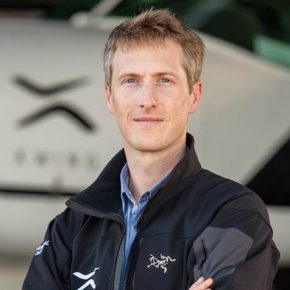Autonomous Aircraft, with Xwing
12 Jul 2021
I spoke to Maxime Gariel, CTO of Xwing about the autonomous flight technology they are developing.
At Xwing, they are converting traditional aircraft into remotely operated aircraft. They do this by retrofitting planes with multiple sensors including cameras, radar, and lidar, and by developing sensor fusion algorithms to allow their planes to understand the world around them, using highly accurate perception algorithms.
Xwing’s autonomous flight technology allows a plane to taxi in the airport, takeoff, fly to a destination, avoid airborne and ground threats, and land, all without any human input. This technology not only enables autonomous flight but may also enhance the safety of manned aircraft by improving a plane’s ability to understand its surroundings.
The unique challenges of operating in autonomously in the air piqued my interest. Unlike with self driving cars, when you are in the sky there are no features you can use to estimate depth and scale using video from a single camera. With objects flying towards you at hundreds of miles an hour, you need to be able to make those measurements rapidly. To solve this, they developed a sensor fusion package that combines video, radar, and ADS-B.
Maxime Gariel

Maxime Gariel is the CTO of Xwing, a San Francisco based startup whose mission is to dramatically increase human mobility using fully autonomous aerial vehicles. Xwing is developing a Detect-And-Avoid system for unmanned and remotely piloted vehicles. Maxime is a pilot but he is passionate about making airplanes fly themselves.
Maxime joined Xwing from Rockwell Collins where he was a Principal GNC Engineer. He worked on autonomous aircraft projects including DARPA Gremlins and the AgustaWestland SW4 Solo autonomous helicopter. Before becoming Chief Engineer of the SW4 Solo’s flight control system, he was in charge of the system architecture, redundancy, and safety for the project.
Before Rockwell Collins, he worked on ADS-B based conflict detection as a postdoc at MIT and on autoland systems for airliners at Thales. Maxime earned his MS and PhD in Aerospace Engineering from Georgia Tech and his BS from ISAE-Supaéro (France).